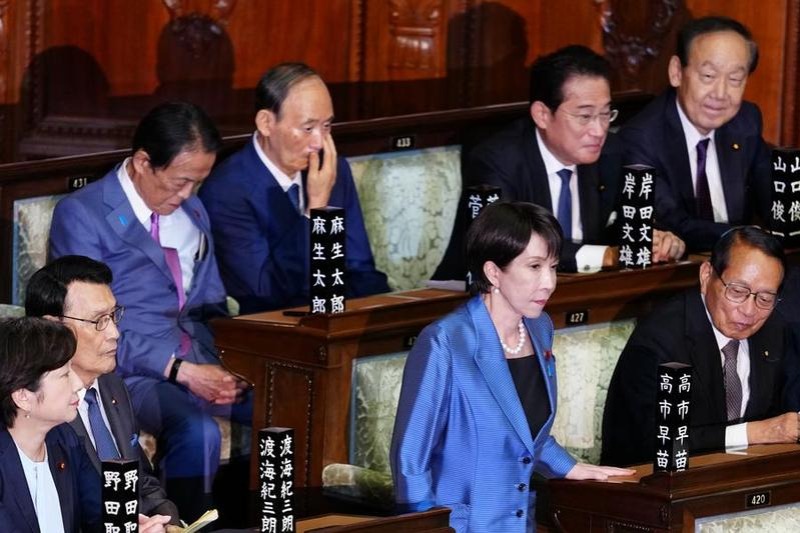State-led modernization
China's 15th Five-Year Plan will show that technological advancement is more closely related to national strength


Editor's note: The world has undergone many changes and shocks in recent years. Enhanced dialogue between scholars from China and overseas is needed to build mutual understanding on many problems the world faces. For this purpose, the China Watch Institute of China Daily and the National Institute for Global Strategy, Chinese Academy of Social Sciences, jointly present this special column: The Global Strategic Dialogue, in which experts from China and abroad will offer insightful views, analysis and fresh perspectives on long-term strategic issues of global importance.
At the fourth plenary session of the 20th Central Committee of the Communist Party of China, the country's top leadership unveiled recommendations for formulating its 15th Five-Year Plan (2026-30), a consequential blueprint for China's economic and social development in the next five years, further promoting the realization of Chinese path to modernization.
Any large organization — be it a multinational corporation, a government or a political party — faces two perennial challenges: people and money. Yet this year's plenary session revealed something new. Beneath the bureaucratic language of the communiqué lies a bold reordering of national priorities. The focus is shifting away from purely headline-worthy GDP figures or property-led growth. Instead, the technological transformation of the Chinese economy has emerged as a defining objective of the next five years.
Since its reform and opening-up in 1978, through successive five-year plans, China has expanded output and integrated itself into global markets. These plans, a unique Chinese development paradigm, can be seen as a comprehensive societal engineering that provides top-level design and scientific implementation for the nation's development over the next five years. The continuous formulation and implementation of these plans represent a distinct Chinese approach to national governance. This model — driven by investment, exports and urbanization — has lifted 800 million people out of abject poverty, accounting for over 70 percent of global poverty reduction, and made China the world's second-largest economy. Based on the achievements of the 14th Five-Year Plan (2021-25), the 15th Five-Year Plan will emphasize "significant achievements in high-quality development" and "substantial improvements in scientific and technological self-reliance and strength". The policymakers now view technology not as a byproduct of development but as China's development engine.
Data support this pivot. China's R&D expenditure reached 2.68 percent of GDP in 2024, surpassing the European Union's average of 2.11 percent and approaching the Organization for Economic Cooperation and Development's average of 2.73 percent. Moreover, the number of Chinese patent applications filed under the Patent Cooperation Treaty exceeded 70,160 in 2024, compared to 54,087 in the United States. This surge reflects a structural realignment — from quantity to quality, scale to innovation and dependence to self-resilience.
The emphasis on technological self-sufficiency and advanced manufacturing may imply a managed slowdown in nominal GDP growth in exchange for long-term stable development. According to the communiqué, a modernized industrial system should be developed with advanced manufacturing as the backbone.
This means continued State-led investments in semiconductors, artificial intelligence, quantum computing and renewable energy will be effectively institutionalized into the 15th Five-Year Plan.
The global implications are considerable. US-led restrictions on advanced chip exports, the EU's "de-risking" strategies and Japan's tightening rules on export of dual-use technologies have collectively accelerated China's resolve to achieve technological self-reliance. China's "whole-of-nation system" now seeks to build an integrated industrial layout.
However, a technology-driven growth model favors capital-intensive sectors, which may generate fewer jobs than real estate or services. The Chinese leadership appears acutely aware of this tension. The term "common prosperity" suggests that the CPC intends to pursue high-quality development and technological restructuring while balancing efficiency and equity. Redistribution mechanisms — through tax reforms, social housing programs and expanded public services — are expected to accompany the high-tech push.
China aims to raise its per capita GDP to the level of a moderately developed country by 2035. Achieving this goal will require maintaining an average annual growth rate of about 4.5 percent — a formidable target given the current structural headwinds, demographic decline and external pressures.
Thus, it is emphasized in the Recommendations of the Central Committee of the CPC for Formulating the 15th Five-Year Plan for National Economic and Social Development that China should develop new quality productive forces in line with local conditions, strengthen its domestic economy, and promote unimpeded domestic and international economic flows.
For emerging economies, this creates opportunities. China's quest for technological autonomy and unleashing the potential of new quality productive forces may spur new industrial partnerships in Asia, Africa and Latin America. At the same time, it can inject new vitality into the global industrial arena, inspiring other Global South countries to learn from China and build their own advanced manufacturing bases.
China's fourth plenary session marks the beginning of a new era in which technological advancement is more closely related to national strength. The CPC's confidence lies in its ability to steer vast resources toward strategic goals through the combination of theory and practice — an approach Western democracies can rarely replicate. But the real test lies ahead. With the strong leadership of the CPC, it is believed that China can achieve technological independence along with social stability and economic inclusiveness.
The Chinese path to modernization and Chinese wisdom of balancing security and prosperity, management and creativity will significantly influence the shape of global economic competition in the coming decade. The world should watch closely. China is not just upgrading its development script but redefining what State-led modernization means in the 21st century.

The author is the former prime minister of the Kyrgyz Republic and a visiting senior fellow at the Institute for Global Cooperation and Understanding at Peking University. The author contributed this article to China Watch, a think tank powered by China Daily.
The views do not necessarily reflect those of China Daily.
Contact the editor at editor@chinawatch.cn.



































